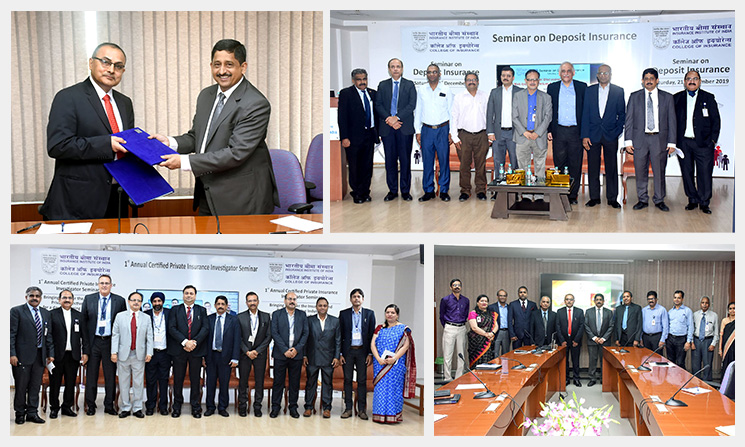Taking insurance education from India to the world
The 65-year old Insurance Institute of India is a major centre for insurance learning and professional training in India and attracts students from around the world. The Insurance Institute of India secretary general Deepak Godbole gives us a glimpse into the various activities of the institute and its future, especially in the reinsurance space.
By Jimmy John

The Insurance Institute of India (III) works in a unique ‘federation of insurance institutes’ not only in insurance education but also in spreading insurance awareness. Historically, there have been several associated institutes across the country, involved in spreading insurance knowledge and awareness.
“We see our associated institutes as connectors between insurers and prospective buyers in the interior of India and also as emissaries of III,” said Mr Godbole. Through its many courses the institute promotes understanding of the need and utility of insurance and the products available to take care of risks.
Building local talent
III also promotes career opportunities in insurance and insurance related industries to younger generations. The insurance industry faces the challenges of a trust deficit, competition from other financial services, ever-changing technology, rising consumer expectations and evolving regulation. The institute helps the insurance industry by training new manpower qualified through passing examinations.
Through the College of Insurance (CoI), it conducts classroom training programmes and organises workshops and seminars. “III both creates interest in risk management and insurance studies for college students and insurance industry officials and also encourages them to appear for insurance examinations. Through CoI activities, we take care of the continuous professional development of insurance industry officials,” said Mr Godbole.
Going global
III offers its examinations and training support globally. The III examinations are now conducted in UAE, Nepal, Bhutan, Bangladesh, Sri Lanka and Myanmar. “The institute has entered into cooperation MoUs with the counterparts in these countries for offering support in examinations and trainings, with the ultimate aim of developing their own capacity in the near future,” said Mr Godbole. The institute recently signed a cooperation agreement with the Insurance Institute of Nepal.
Aligning examinations with training
Rapidly changing technology teaches the insurance industry that ‘change is the only constant’. Driverless cars, drones used for accident surveys, satellite imagery for estimation of flood/ agriculture losses, data analytics, and unconventional distributors selling insurance are some of the examples of disruptors in the insurance operating environment.
“Realising this, we decided to look at more frequent content updating in the area of examinations and we have added new topics in our calendar of training programmes and also introduced mobile app-based training for intermediaries,” said Mr Godbole.
Apart from its post-graduate diploma course in health insurance and insurance marketing, the institute has introduced the certified insurance anti-fraud professional course. It conducts seminars on ERM, insurance fraud investigation, deposit insurance and Aayushman Bharat- the mass heath scheme introduced by the government of India. “All of these courses are conducted with the aim of keeping industry participants updated,” said Mr Godbole.
Training reinsurance professionals
The institute’s annual calendar takes care of specific programmes on reinsurance. “For those who have already gone through the basic reinsurance appreciation programme, CoI offers more detailed programmes focusing on operational areas like reinsurance treaty, reinsurance accounting, reinsurance programme design,” said Mr Godbole. For this course, the institute arranges faculty with long years of working experience in the field of reinsurance. The institute is also gearing up to launch a specialised diploma in reinsurance.
Mr Godbole believes there is plenty of room for growth. “India and its neighbours have lots in common,” He said. “These are among the least-penetrated insurance markets with scope for growth of life, non-life and reinsurance. Many foreign insurers are already here through joint ventures. Branches of many foreign reinsurers and Lloyds have also set up offices in India.
“When demand is growing and supply is strengthening, the insurance industry is going to keep growing at an impressive pace. There will be opportunities for insurance professionals with knowledge of actuarial science, underwriting and claims. Added to that, to take care of changing operating environment, there will be exciting opportunities for experts in the fields of IT, data analytics, surveys and loss assessing. III is ready to assist to cope up with the demands of the industry.”